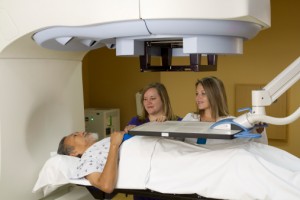
Prostate cancer is a common form of cancer that affects men. The risk of developing prostate cancer increases with aging, making it a top health priority for men. In 2015, much information about prostate cancer arose in regards to treatment, screening and even links between prostate cancer and other health ailments.
Here is a roundup of the top prostate cancer news stories that Bel Marra Health covered in 2015, with all the information that came out during this past year.
Prostate Cancer Screening: The problem with prostate cancer screening
New prostate cancer screening guidelines are causing confusion and disagreements.
Authors of the new guidelines suggest that men over the age of 45 with a 10-year life expectancy for prostate cancer should be screened with a digital rectal exam (DRE) and a prostate-specific antigen (PSA) test. Health care providers should educate patients about the use of both tools for screening and evaluating prostate cancer risk. Learn More
Prostate Cancer Prevention: Exercise, healthy lifestyle, may protect men against prostate cancer
Researchers found that exercise and a healthy lifestyle can help prevent prostate cancer.
Many prostate cancers are not life threatening, but there are some aggressive types that can attack the bones and other organs, which can be fatal.
For the research, investigators analyzed data from two U.S. studies that tracked over 62,000 men over the course of 30 years. The researchers created a point system for the surveys, which were completed by the participants. Points were given based on regular exercise intensity that led to sweating, body mass index under 30, tobacco-free status for at least 10 years, intake of fatty fish, high intake of tomatoes and low intake of processed meat. Learn More
Alzheimer’s and Prostate Cancer: Prostate cancer treatment linked with Alzheimer’s disease risk
A new study uncovered that a common prostate cancer treatment can increase the risk of Alzheimer’s.
Testosterone has been shown to promote the growth of prostate tumors and so ADT has been used to reduce testosterone and other androgens in prostate cancer patients. In the U.S. nearly half a million men currently receive ADT for prostate cancer.
The researchers identified nearly 18,000 prostate patients from two institutions; 16,888 had non-metastatic prostate cancer and 2,397 had been treated with ADT. Learn More
Prostate Cancer Treatment: Yoga benefits men undergoing prostate cancer treatment
Researchers discovered that yoga successfully diminishes side effects from prostate cancer treatment.
Side effects experienced due to prostate cancer treatment are fatigue, changes in sexual health, and urinary incontinence. These side effects became stable in the men who engaged in yoga over the course of the study. Dr. Vapiwala said, “Data have consistently shown declines in these important measures among prostate cancer patients undergoing cancer therapy without any structured fitness interventions, so the stable scores seen with our yoga program are really good news.” Learn More
Prostate Cancer Risk: What the length of your fingers says about your health
The length of a man’s index finger is related to his prostate cancer risk.
In alternative research the findings were quite opposite, meaning when the ring finger was longer than the index finger the risk of prostate cancer was higher. So what are we supposed to believe, or are they both just myths?
The common trend between both findings has less to do with which finger length is greater and more to do with genes; HOX genes to be exact.
HOX genes are responsible for the development of the body. In the womb HOX genes guide development of organs like the prostate and kidneys and extremities like your fingers. Learn More